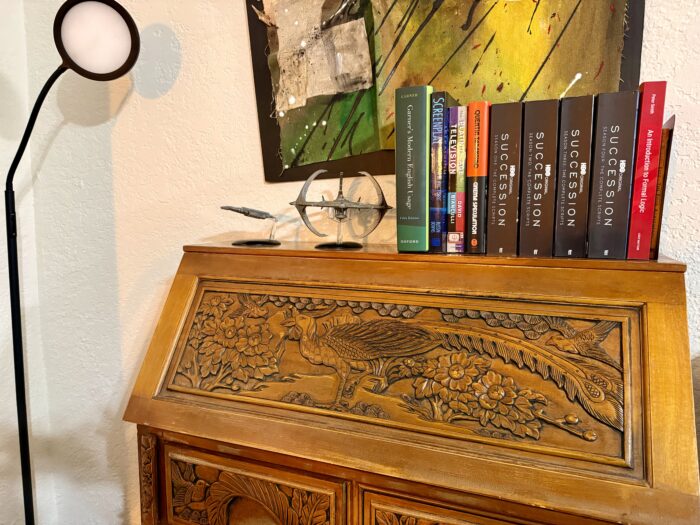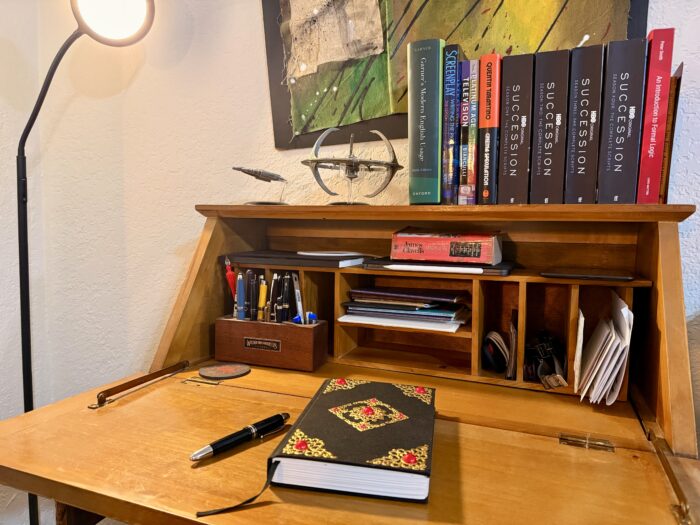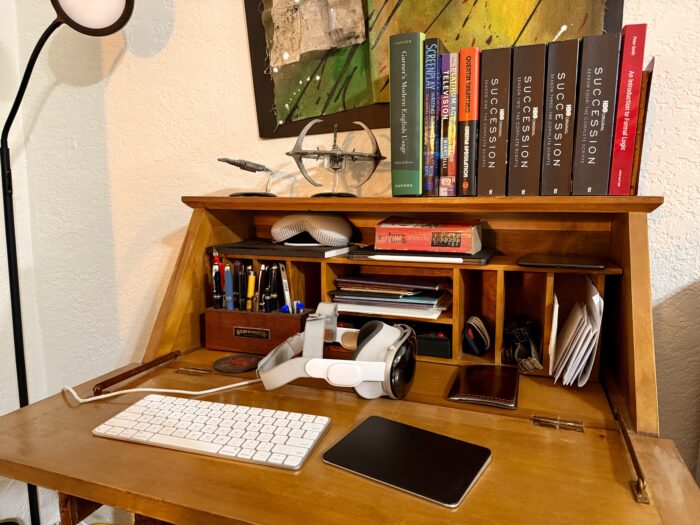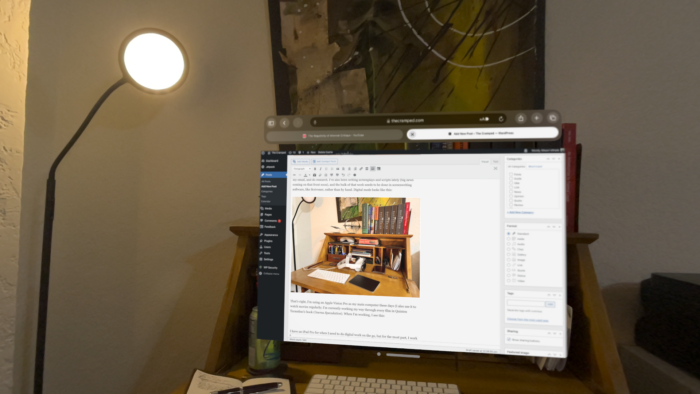For the last few years, I’ve worked at a simple white Amazon Basics sit-stand desk. When I bought it, I was still deeply into the whole “minimalist” aesthetic, but as I renewed my love for fountain pens and paper, and as I started establishing firmer boundaries between time spent offline and online, I began to desire a desk that better embodied this way of doing things. So for the last year or so, I’ve been keeping an eye out for an antique writing desk.
A couple weeks ago, I finally found one for a great price at a yard sale in Burbank. My partner and I were driving past, and I just happened to spot it out of the corner of my eye. It’s beautiful, and it fits my workspace in our new apartment perfectly. I’ve come to think of it as having three modes: closed, analogue, and digital.
When it’s closed, it looks like this:
Analogue mode is where I prefer to spend most of my time—journaling, reading, hand handwriting fiction. That looks like this:
Alas, I can’t spend all my time in analogue mode. I still need to log on to the Internet, check my email, and do research. I’ve also been writing screenplays and scripts lately (in a surprising career shift), and the bulk of that work needs to be done in screenwriting software, like Scrivener, rather than by hand. Digital mode looks like this:
That’s right, I’m using an Apple Vision Pro as my main computer these days (I also use it to watch movies regularly; I’m currently working my way through every film in Quentein Tarantino’s book Cinema Speculation).
When I’m working, I see something like this:
I have an iPad Pro for when I need to do digital work on the go, but for the most part, I work at this desk, and I love how the Vision Pro allows me to put even the largest screens in a drawer when I’m done with them so I can focus on analogue writing, and my beloved analogue tools, without distraction. It’s very Star Trek: Picard.




